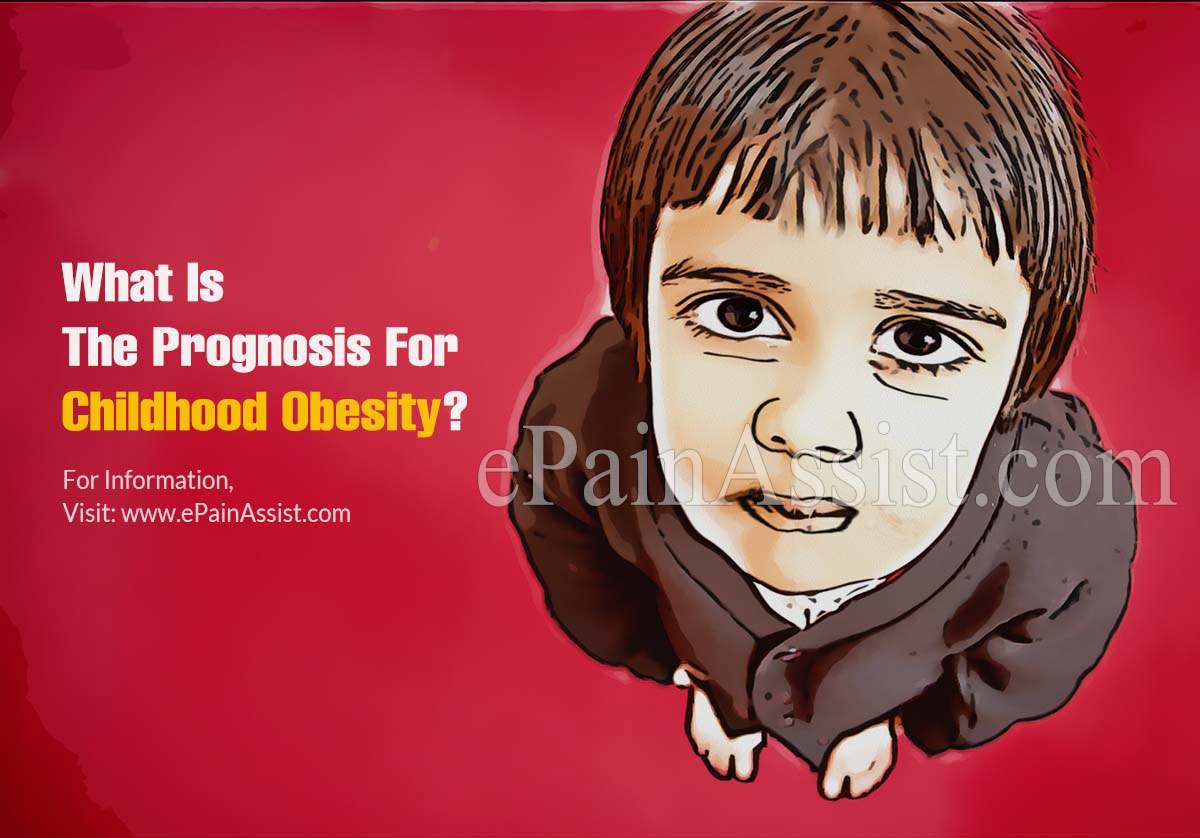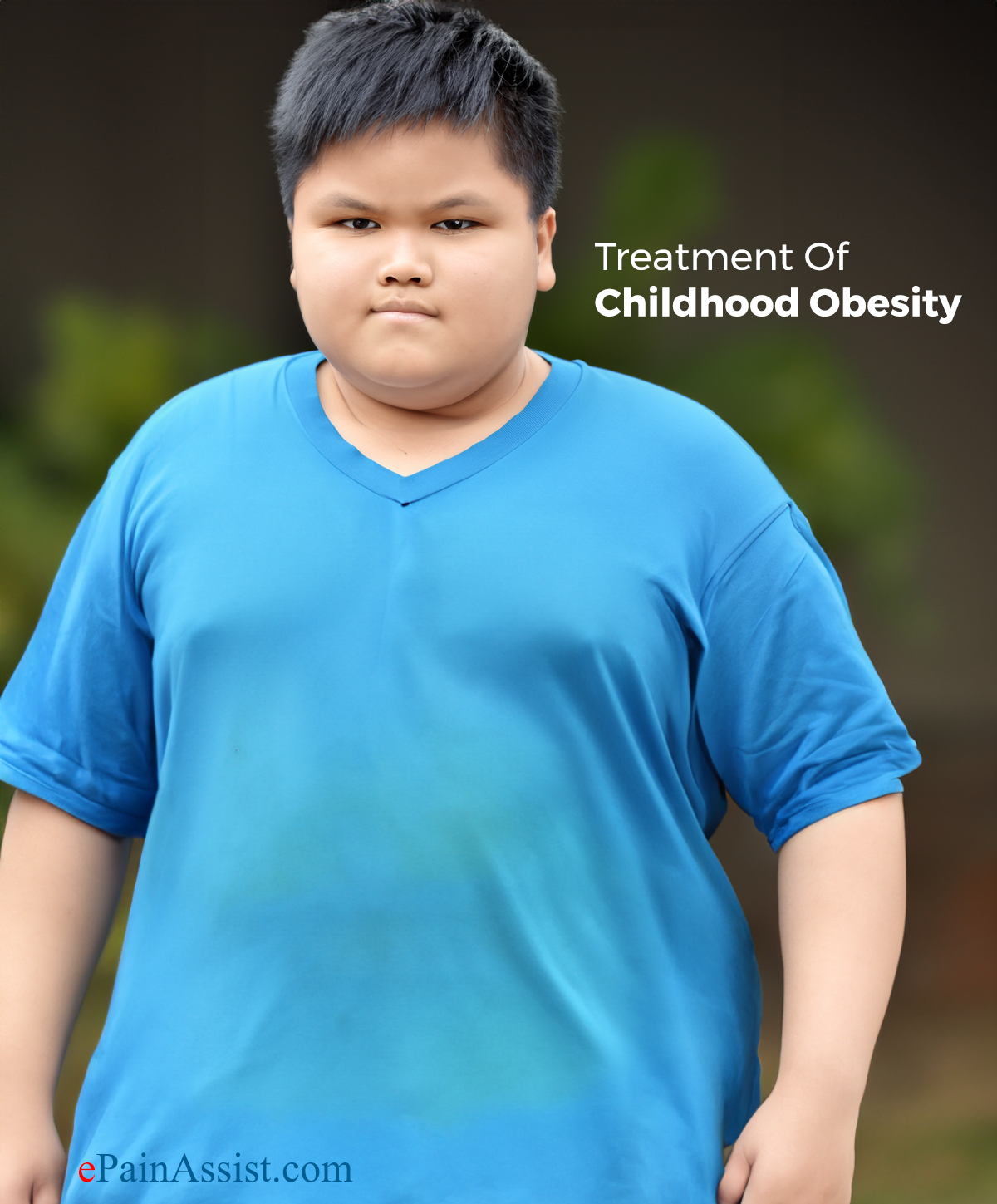Childhood obesity is a chronic metabolic disorder, accompanied by excessive deposition of fat in the body. The disease manifests itself in increased body weight and predisposes to the development of sleep apnea, osteoarthritis, insulin resistance, high blood pressure, gonadal dysfunction, flatfoot, dyslipidemia, constipation, cholecystitis, anorexia, bulimia, and others. The diagnosis of obesity in children and teenagers is made on the basis of height measurement; body mass, BMI and exceeding the actual indicators. Treatment of childhood obesity includes diet therapy, rational exercise, and psychotherapy.(1)

What Is The Prognosis For Childhood Obesity?
The overall global increase in the prevalence of childhood obesity is alarming. A wide range of risks is associated with this condition that can impact the physical and psychological health of the child with both short as well as long term consequences. There is a continued increase in the number of children with obesity who are vulnerable to a considerable risk of Type II diabetes, heart disease and stroke along with different other health complications. Moreover, there is limited treatment or prevention plan for this condition. Untreated childhood obesity thus has severe and serious consequences in the later stages of the child’s life. There are also the social consequences of this disease that should not be overlooked.
When It Is Considered Obese?
A child is considered obese when his/her body weight exceeds the age limit by 15% and more, and body mass index (BMI) is ≥30. Worldwide, the prevalence of childhood obesity is growing epidemically, which requires pediatric and pediatric endocrinology to pay serious attention. Almost 60% of adults suffering from obesity or overweight problems have the condition starting in their childhood and adolescence years. The progression of childhood obesity leads to future cardiovascular, endocrine, metabolic, reproductive disorders as well as diseases of the digestive tract and musculoskeletal system.(5)
Causes Of Childhood Obesity
Childhood obesity has a poly-etiological character. In its initiation, the role of a complex interplay of genetic and environmental factors is crucial. In all cases, the basis for childhood obesity is an energy imbalance due to increased energy consumption and reduced energy expenditure in the form of metabolism.
When both parents are obese, the likelihood of the child to become obese is 80%. It decreases to 50% and 38% respectively when only the mother or father of the child is obese.
The risk groups for developing obesity are children who have increased body weight at birth (more than 4 kg) and excessive monthly weight gain and are bottle-fed. In infants, obesity can develop against the background of over-feeding a child with high-calorie mixtures, violations of the rules for the introduction of complementary foods.(5)
Diagnosing Childhood Obesity
The clinical evaluation of obesity and its severity in children also includes the medical history, clarification of the type of nutrition received during infancy and the nutritional characteristics of the child, and accessing his/her physical activity.
An objective examination by a pediatrician leads to anthropometry: recording growth, body mass, waist circumference, hip volume, and body mass index. The data obtained are compared to special standards (age and sex-matched) based on which the child is diagnosed as overweight or obese.
In some cases, for example, during mass inspections, the method used to measure the thickness of the skin fold, determining the relative mass of the adipose tissue by the bioelectrical resistance technique.(6)

Treatment Of Childhood Obesity
The focus of medical care for obese children revolves around weight loss, treatment of associated diseases, maintenance of the result achieved and prevention of further weight gain.
First of all, for an obese child, a personalized diet plan is chosen. The diet plan suggests a reduction in daily calories from animal fats and refined carbohydrates. Parents are trained to calculate daily calories. Simultaneously exercise schedule including walks and outdoor games are recommended for younger children. Sporting activities (swimming, cycling, etc.) are also helpful. Diet therapy should be carried out under the guidance of a pediatrician or nutritionist.
It is important to treat the disease and it should not be underestimated keeping in mind the severe consequences it may have in the future.(6)
- Gurnani M, Birken C, Hamilton J. Childhood obesity: causes, consequences, and management. Pediatric Clinics. 2015;62(4):821-840.
- Simmonds M, Llewellyn A, Owen C, Woolacott N. Predicting adult obesity from childhood obesity: a systematic review and meta‐analysis. Obesity reviews. 2016;17(2):95-107.
- Sahoo K, Sahoo B, Choudhury AK, Sofi NY, Kumar R, Bhadoria AS. Childhood obesity: causes and consequences. Journal of family medicine and primary care. 2015;4(2):187.
- Rankin J, Matthews L, Cobley S, et al. Psychological consequences of childhood obesity: psychiatric comorbidity and prevention. Adolescent health, medicine and therapeutics. 2016;7:125.
- Freemark MS. Pediatric obesity: Etiology, pathogenesis and treatment. Springer; 2018.
- Wadden TA, Bray GA. Handbook of obesity treatment. Guilford Publications; 2018.
Also Read:
- Weight Problems in Children| Natural Ways to Treat Childhood Obesity
- How Do Parents Cause Childhood Obesity & What Is The Recommended Treatment For It
- Is Childhood Obesity A Problem & What Are Its Coping Methods?
- What Are The Effects Of Childhood Obesity & Is It On The Rise?
- What Are The Long-Term Effects Of Childhood Obesity & Which Country Has The Highest Rate Of It?
- Is Childhood Obesity A Serious Condition & Can It Be Reversed?
- Lifestyle Changes For Childhood Obesity
